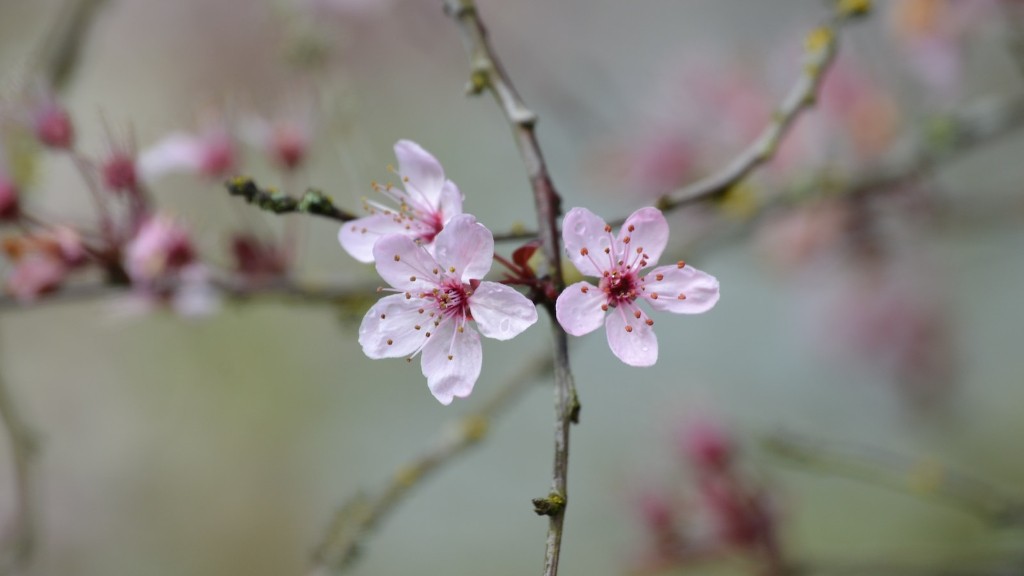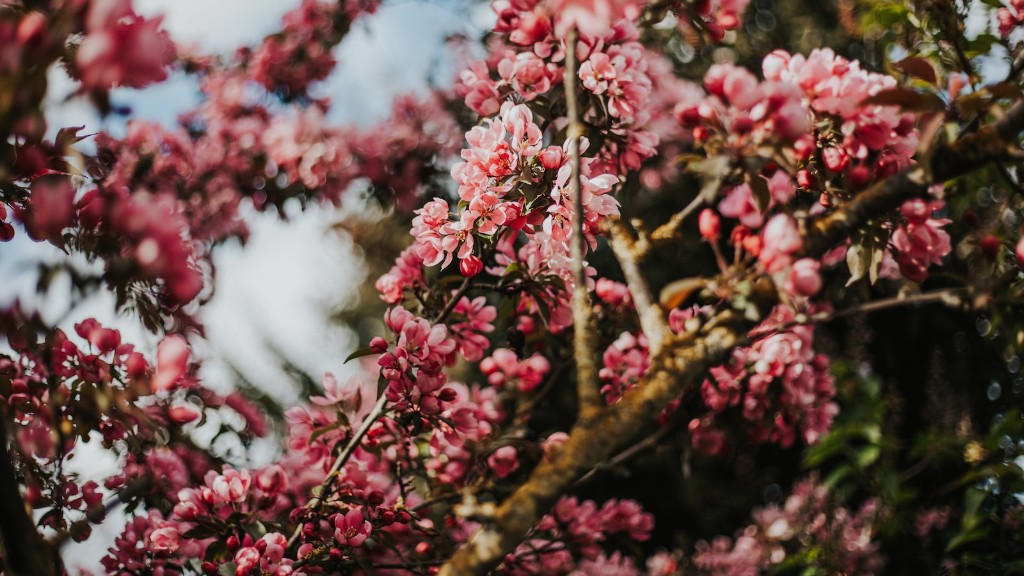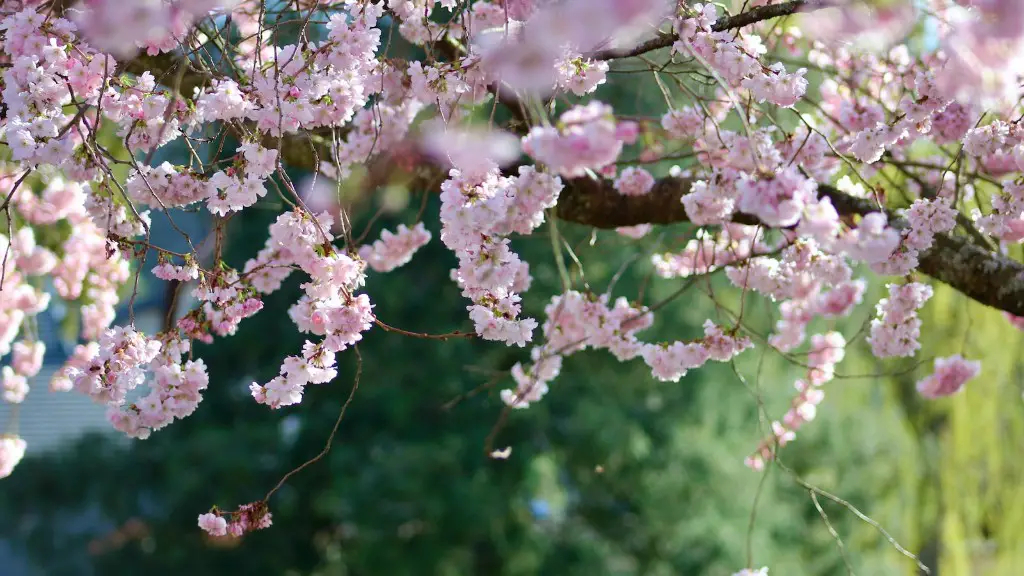Cherry blossom trees, or Prunus serrulata, are a type of tree native to Japan, China, Korea, and other countries. These trees are most notably known for their beautiful blooms, which often appear to be pink snowflakes. Despite the seemingly delicate nature of these flowers, cherry blossom trees can grow larger than one may think.
Cherry blossom trees typically have a short lifespan. According to experts, these trees can range from 10 to 80 feet tall and from 10 to 30 feet wide. Most grow to about 30 feet tall, although there have been specimens known to reach an impressive 80 feet. The flowers of cherry blossom trees bloom for a few weeks in late spring, usually around April and May in the Northern Hemisphere.
The trees take several years to reach their full height and can be a slow-growing species. When cared for properly, cherry blossom trees can grow to reach 40 to 50 feet in height and spread up to 20 feet wide. Even though they are slow-growing trees, they are still considered a long-term investment due to their beauty, which has been admired for centuries.
Although cherry blossom trees are known to be slow-growing, there are certain conditions that can cause them to reach their full size much more quickly than usual. If a cherry blossom tree is planted in nutrient-rich soil and exposed to full sun, it will likely reach its full size in a shorter amount of time. On the other hand, if planted in poorly drained soil or in an area with partial shade, the tree may never reach its full size.
Cherry blossom trees require very little maintenance. The most important aspect of caring for these trees is to be sure to provide them with plenty of water. The tree should also be pruned once a year to maintain its shape and health.
Cherry blossom trees are a beautiful addition to any yard or garden and can even be grown indoors if given proper care and maintenance. They provide a stunning display of petals in the spring, and the impact of these trees on the landscape is undeniable.
How to Plant a Cherry Blossom Tree
When planting a cherry blossom tree, it is important to find an area with adequate sunlight and well-drained soil. Plant the tree in a hole two to three times as wide and just as deep as the roots. Gently fill in the soil around the roots and water deeply to settle them into the ground. Prune away any damaged or dead branches and trim the tree periodically to maintain its shape and keep it healthy.
Taking Care Of Cherry Blossom Trees
Cherry blossom trees require a bit of special care to keep them looking their best. Be sure to water them deeply once a week during hot, dry weather and fertilize them twice a year with a balanced fertilizer. Prune away any diseased or dead branches and keep the tree well-maintained in order to keep it healthy and encourage strong, beautiful blooms.
Common Issues with Cherry Blossom Trees
Cherry blossom trees are relatively easy to care for, but there are some common issues that can occur. These trees are susceptible to fungal diseases, such as powdery mildew and cherry canker, and insect pests, such as aphids and scale insects. Fungal issues can be treated with fungicides, while insect pests should be treated with insecticides.
The Benefits of Having a Cherry Blossom Tree
There are many benefits to having a cherry blossom tree in your yard. Not only do they look beautiful, but they also provide a unique sense of tranquility to any garden. The perfect combination of colorful blossoms, lush leaves, and draping branches make for an exquisite backdrop for any outdoor space.
Cherry blossom trees are an excellent way to add color and texture to the environment. These trees also provide a valuable habitat for wildlife, such as birds, bees, and butterflies, which can help to create a balanced ecosystem in your outdoor space. Lastly, they are a great way to bring a bit of nature into your landscape.
Foods From Cherry Blossom Trees
Cherry blossom trees are more than just aesthetically pleasing; these trees can produce edible fruit as well. Although it takes several years for trees to begin producing fruit, when they do, they can be harvested and eaten fresh or used to make jams and jellies. The fruit of the cherry blossom tree is small and tart, making it a great addition to pies and other recipes.
Symbolism of Cherry Blossom Trees
Cherry blossom trees have long been considered a symbol of renewal and rebirth. Although the short-lived blooms are beautiful, it is their transience that is most symbolic. These trees are attributed to the age-old concept of cherishing life in the moment and accepting that everything has a predecessor and a successor.
The History of Cherry Blossom Trees
Cherry blossom trees have been a part of Japanese culture and tradition for centuries. Sakura, the Japanese word for cherries, symbolizes life, beauty, and the fragility of existence. It is celebrated each year with a traditional festival known as Hanami, which literally translates to “flower viewing.” This festival brings families and friends together in appreciation of the beauty of the cherry blossom tree and all of nature’s wonders.



